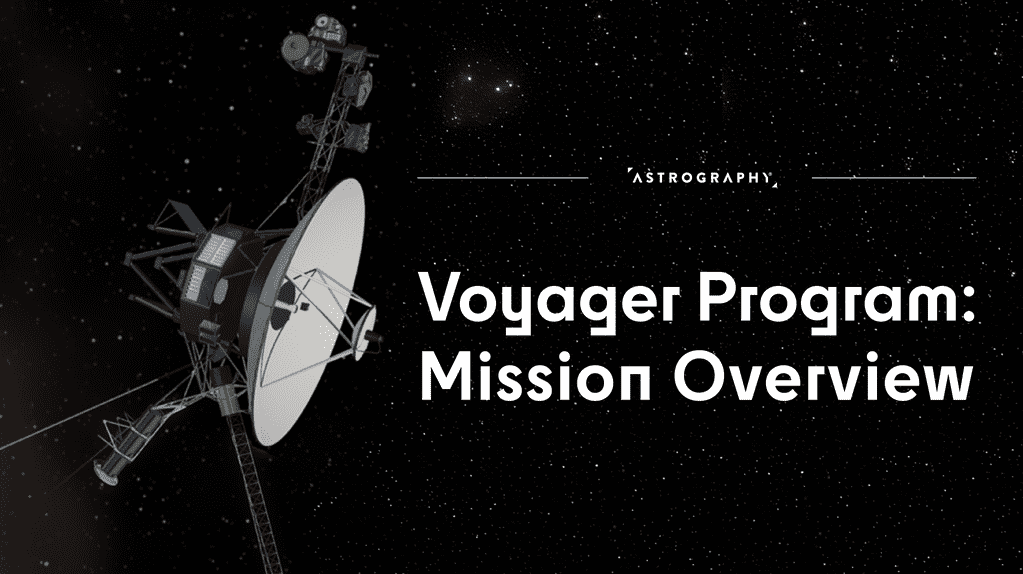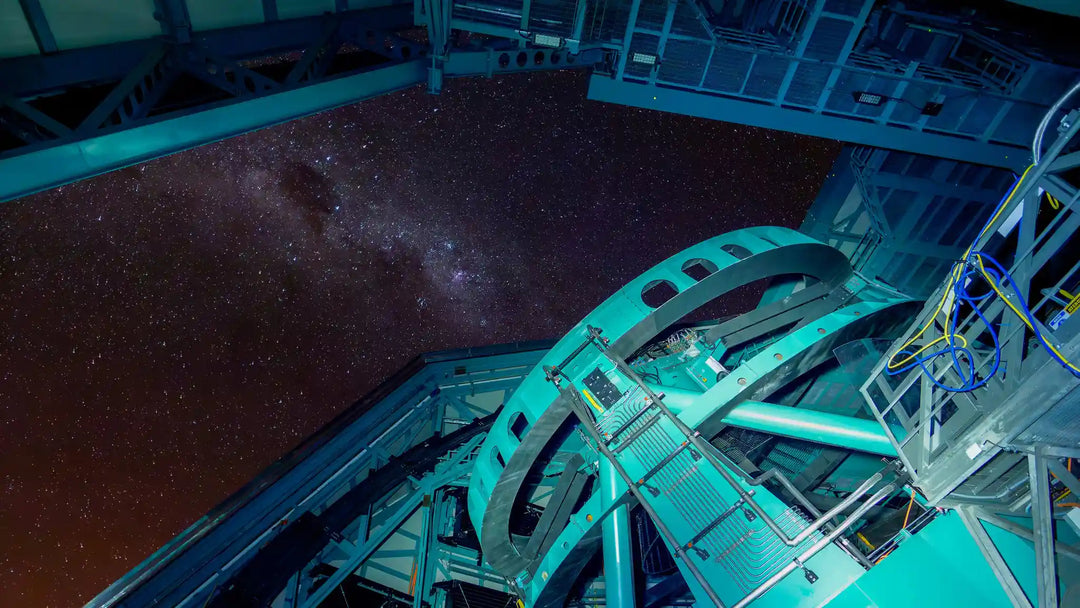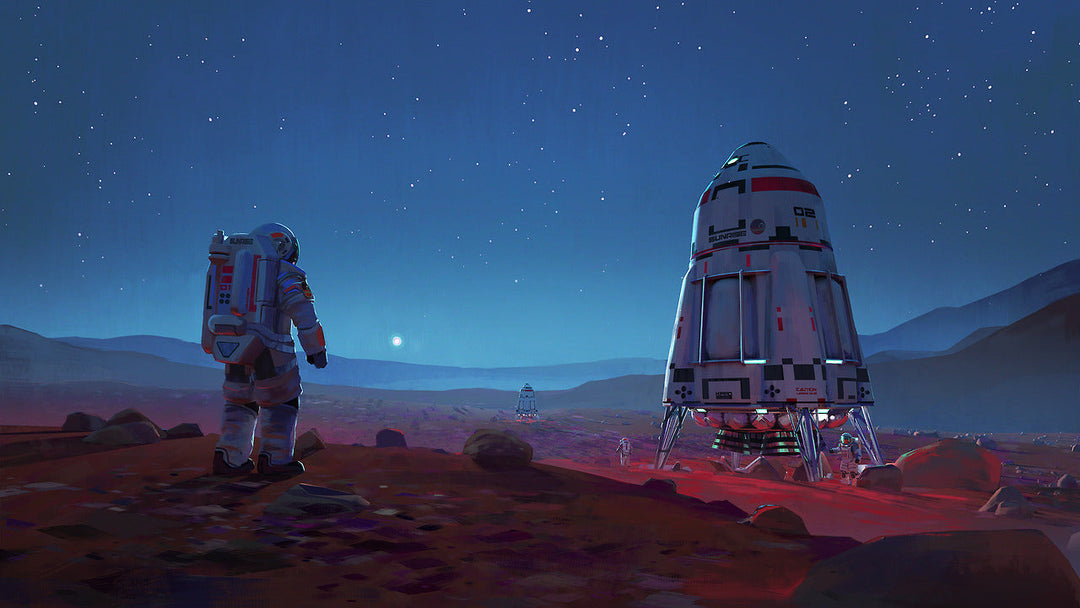Voyager Program: Missions Overview

The Voyager mission, an extraordinary feat of human ingenuity and ambition, has captivated the imagination of millions since its inception in the 1970s. Launched by NASA, the twin spacecraft—Voyager 1 and Voyager 2—were designed to explore the outer planets of our solar system and beyond. Their journey not only expanded our understanding of the cosmos but also served as a testament to the potential of human exploration.
Voyager Program: Context and History
The Voyager mission was conceived during a time of great enthusiasm for space exploration. In the 1960s, scientists proposed a "Grand Tour" of the outer planets, taking advantage of a rare alignment of Jupiter, Saturn, Uranus, and Neptune.
This alignment would allow a spacecraft to use gravitational assistance to travel from one planet to another, significantly reducing travel time and fuel requirements.
Voyager Probes: When did Voyagers Launch?
Voyager 2 was launched first on August 20, 1977, followed by Voyager 1 on September 5, 1977. Both spacecraft were equipped with advanced scientific instruments to study the planets, their moons, and the surrounding environments.
Read more about Voyager Probes
Voyager: Mission Objectives
The primary goals included conducting close-up studies of Jupiter, Saturn, Uranus, and Neptune, as well as their moons and rings. The mission aimed to gather data on the atmospheres, magnetic fields, and geological features of these celestial bodies.
Voyagers' Significance for Humanity
The Voyager mission holds profound significance not only for scientists but for humanity as a whole.
Scientific Contributions: The data collected by Voyager has transformed our understanding of the solar system. Voyager 1 provided groundbreaking images and information about Jupiter and Saturn, revealing complex atmospheric phenomena and intricate ring systems. Voyager 2 followed suit, becoming the only spacecraft to have visited Uranus and Neptune, offering insights into their unique characteristics.
Interstellar Exploration: Voyager 1 became the first human-made object to enter interstellar space on August 25, 2012. Voyager 2 followed, crossing into interstellar space on November 5, 2018. This milestone not only marks a significant achievement in space exploration but also opens new avenues for understanding the heliosphere and the interstellar medium.
Cultural Impact: The Voyager mission has inspired generations. The inclusion of the Golden Record—a phonograph record containing sounds and images representing life on Earth—was a bold statement of humanity's desire to communicate with potential extraterrestrial life. This record serves as a time capsule of human civilization, reflecting our diversity and shared experiences.
Lesser-Known Facts About the Voyager Missions
The Voyager missions, launched in 1977, are celebrated as one of humanity's most significant achievements in space exploration. While many are familiar with the basic milestones of Voyager 1 and Voyager 2—such as their encounters with Jupiter and Saturn—there are numerous lesser-known facts that highlight the ingenuity, challenges, and legacy of these remarkable spacecraft.
1. The Dual Spacecraft Strategy
One of the primary reasons for launching two Voyager spacecraft was to increase the mission's chances of success. Given the uncertainties in early spacecraft technology, having a backup meant that if one spacecraft encountered a problem, the other could continue to gather data. This strategy proved invaluable when both spacecraft experienced anomalies, such as Voyager 1's stuck scan platform in 1978, which could have jeopardized critical observations.
2. The Golden Record: A Message to the Cosmos
Each Voyager spacecraft carries a unique time capsule known as the Golden Record. This phonograph record contains sounds and images that represent the diversity of life and culture on Earth. It features greetings in 55 languages, music from various cultures, and even natural sounds like thunder and whale songs. The intention was to communicate the essence of humanity to any extraterrestrial life that might encounter the spacecraft in the distant future.
3. The First Computer-Controlled Spacecraft
Voyager was the first mission to utilize a fully computer-controlled spacecraft. This innovative technology allowed the Voyager probes to perform autonomous operations, including checking their systems and switching to backup systems as needed. This level of autonomy was crucial for missions deep in space, where communication delays could hinder timely responses to potential issues.
4. Voyager's Legacy in Technology
The technological advancements developed for the Voyager missions have had far-reaching impacts beyond space exploration. For example, the coding systems created to transmit weak signals from deep space have been adapted for use in everyday technologies, such as cell phones and CDs. Additionally, the image processing techniques developed for Voyager have influenced modern smartphone camera technology.
5. The Pale Blue Dot Photograph
On February 14, 1990, Voyager 1 turned its camera back toward Earth and captured the iconic "Pale Blue Dot" photograph. In this image, Earth appears as a tiny speck in the vastness of space, emphasizing our planet's fragility and insignificance in the cosmos. This moment has become a powerful reminder of humanity's place in the universe and is often cited in discussions about environmental stewardship and global unity.
Read more: Pale Blue Dot Photo - History, Significance & Legacy
6. Crossing the Heliopause
Voyager 1 made history in August 2012 by becoming the first human-made object to enter interstellar space, crossing the heliopause—the boundary where the solar wind from the Sun slows down and merges with the interstellar medium. Voyager 2 followed suit in November 2018. These crossings have allowed scientists to gather unprecedented data about the characteristics of interstellar space, including cosmic rays and the galactic magnetic field.
7. The Voyager Interstellar Mission
After their primary missions to explore the outer planets, both Voyager spacecraft were repurposed for the Voyager Interstellar Mission (VIM). This ongoing mission aims to study the outermost edges of the Sun's influence and the interstellar environment. The spacecraft continue to send back valuable scientific data, demonstrating the longevity and resilience of their design.
8. The Uniqueness of Voyager 2
While Voyager 1 and Voyager 2 were launched within weeks of each other, Voyager 2 is notable for being the only spacecraft to have visited Uranus and Neptune. Its close encounters with these ice giants provided critical insights into their atmospheres, moons, and ring systems, significantly enhancing our understanding of these distant worlds.
Trivia and Interesting Facts about Voyager Program
Distance Records: Currently, Voyager 1 is the most distant human-made object from Earth, traveling over 14 billion miles away. It surpassed Pioneer 10 in 1998 to claim this title.
Longevity: The spacecraft were designed for a five-year mission, yet they have continued to operate for over four decades. Their longevity is a testament to the robust engineering and design that went into their construction.
Power Source: Voyager spacecraft are powered by radioisotope thermoelectric generators (RTGs), which convert heat from the radioactive decay of plutonium-238 into electricity. This power source has allowed them to operate in the cold, dark reaches of space.
Legacy of Data: Voyager has transmitted back an incredible wealth of data, including over 22,000 images of the planets and their moons, as well as extensive measurements of magnetic fields and cosmic radiation.
What unique technologies were developed specifically for the Voyager missions
The Voyager missions, launched in 1977, were groundbreaking not only for their scientific discoveries but also for the unique technologies developed specifically for their operation. These innovations have had lasting impacts on both space exploration and everyday technology. Here are some of the key technologies that emerged from the Voyager program:
1. Computer-Controlled Spacecraft
The Voyager probes were the first fully computer-controlled spacecraft. This innovation allowed them to operate autonomously, managing their systems, conducting scientific observations, and even troubleshooting issues without direct commands from Earth. The onboard computers, including the Computer Command System (CCS) and the Flight Data System (FDS), were designed to run continuously and handle complex tasks, setting a precedent for future space missions.
2. Advanced Communication Systems
Voyager's communication system was engineered to transmit data over vast distances, utilizing a high-gain antenna that measures 3.7 meters in diameter. This system was capable of sending signals back to Earth from billions of miles away, using only about 12 watts of power—equivalent to a light bulb. The coding systems developed to handle the weak signals from deep space have influenced modern technologies, including cell phones and CD players.
3. Radioisotope Thermoelectric Generators (RTGs)
Each Voyager spacecraft is powered by three RTGs, which convert heat from the radioactive decay of plutonium-238 into electricity. This power source was crucial for long-duration missions, allowing the spacecraft to operate far from the Sun, where solar panels would be ineffective. The RTGs have provided a reliable power source for over four decades, demonstrating the effectiveness of this technology in deep-space exploration.
4. Image Processing and Data Handling
The Voyager missions utilized advanced imaging systems that included vidicon cameras and spectrometers. The data handling capabilities were groundbreaking for their time, allowing for the storage and transmission of high-resolution images and scientific data. The image processing techniques developed for Voyager have since influenced modern imaging technologies, including those used in smartphones.
5. Gravity Assist Navigation
The concept of gravity assists, which involves using the gravitational pull of planets to change the trajectory and speed of a spacecraft, was effectively demonstrated by the Voyager missions. This technique allowed the spacecraft to travel to multiple outer planets efficiently, saving fuel and time. The success of this method has since been adopted in numerous space missions, including those to Saturn, Pluto, and beyond.
6. Fault Detection and Recovery Systems
The Voyager spacecraft were equipped with sophisticated fault detection and recovery systems. These systems allowed the probes to identify and correct issues autonomously, ensuring continued operation despite the harsh conditions of space. This capability has become standard in modern spacecraft design, enhancing reliability and safety.
Conclusion
The Voyager mission is a remarkable chapter in the story of human exploration. It represents not only our quest for knowledge about the universe but also our enduring spirit of curiosity and discovery. As Voyager continues its journey through interstellar space, it serves as a beacon of hope and inspiration, reminding us of the boundless possibilities that lie beyond our planet.
The legacy of the Voyager mission will undoubtedly influence future generations of scientists, explorers, and dreamers as they look to the stars.
Voyager missions have revolutionized our understanding of the outer planets and interstellar space.
The Golden Record encapsulates the essence of humanity.
Innovations from the Voyager program underpin many modern technologies.
FAQ Section - You Ask, We Answer
1. What is the purpose of the Voyager mission?
To explore the outer planets and beyond, gathering critical data about the solar system and interstellar space.
2. Where is Voyager 1 now?
As of now, Voyager 1 is in interstellar space, making it the most distant human-made object from Earth. It is over 14 billion miles (approximately 22 billion kilometers) away from our planet. Voyager 1 crossed the heliopause—the boundary where the solar wind from the Sun slows down and merges with the interstellar medium—on August 25, 2012. This milestone marked its entry into interstellar space, where it continues to send valuable scientific data back to Earth.
For more detailed and up-to-date information, you can visit NASA's dedicated Voyager mission page: https://science.nasa.gov/mission/voyager/where-are-they-now/
3. How fast is Voyager 1 traveling?
Voyager 1 is traveling at a speed of approximately 38,000 miles per hour (about 61,000 kilometers per hour) relative to the Sun. This incredible speed has allowed it to cover over 14 billion miles since its launch in 1977.
To put this into perspective:
It travels approximately 13.6 miles per second (22 kilometers per second).
Voyager 1's high velocity is the result of gravitational assists it received during its flybys of Jupiter and Saturn. These assists significantly increased its speed, allowing it to travel far into the outer reaches of the solar system and beyond.
Despite this immense speed, it takes light from Voyager 1 over 21 hours to reach Earth due to the vast distances involved. This delay emphasizes just how far Voyager 1 has traveled and continues to highlight the challenges and awe-inspiring nature of deep-space exploration.
4. Where is Voyager 2 now?
As of now, Voyager 2 is also in interstellar space. It crossed the heliopause—the boundary where the solar wind from the Sun slows down and merges with the interstellar medium—on November 5, 2018. This made Voyager 2 the second human-made object, after Voyager 1, to enter interstellar space.
Voyager 2 is currently over 12 billion miles (approximately 19 billion kilometers) from Earth. It continues to send back valuable scientific data about the outer regions of our heliosphere and the surrounding interstellar space. This data includes measurements of plasma, cosmic rays, magnetic fields, and more, helping scientists gain a better understanding of the interstellar environment.
Voyager 2's unique contributions include being the only spacecraft to have visited Uranus and Neptune, providing unprecedented data about these distant ice giants. Similar to Voyager 1, it is powered by radioisotope thermoelectric generators (RTGs), which enable it to operate in the cold, dark reaches of space.
For more detailed and up-to-date information, you can visit NASA's dedicated Voyager mission page: https://science.nasa.gov/mission/voyager/where-are-they-now/
5. When will Voyager 1 “die”?
Voyager 1 is expected to "die" or stop communicating with Earth when its power supply is exhausted. The spacecraft is powered by radioisotope thermoelectric generators (RTGs), which convert heat from the radioactive decay of plutonium-238 into electricity. As the plutonium decays over time, the power output decreases.
Here are the critical points regarding Voyager 1’s remaining operational timeline:
Power Decrease: Each year, the power output decreases by a small amount due to the decay of plutonium-238.
Instrument Shutdowns: As power decreases, the mission team has been gradually shutting down non-essential instruments and systems to conserve power for critical scientific operations and communication systems.
Expected Timeline: It is estimated that Voyager 1 will have enough power to keep some instruments and its communication systems operational until around 2025.
While the exact "death" date of Voyager 1 isn't known, the spacecraft will eventually no longer be able to sustain its instruments or communicate with Earth. However, even after it ceases communication, Voyager 1 will continue to drift through space, a silent testament to human ingenuity and exploration.
6. How is Voyager 1 powered?
Voyager 1 is powered by radioisotope thermoelectric generators (RTGs). These RTGs convert the heat generated from the radioactive decay of plutonium-238 into electricity, which powers the spacecraft's systems and scientific instruments.
Voyager 1's RTGs are an exemplary demonstration of robust and long-term power solutions for space exploration, enabling the spacecraft to travel billions of miles and continue transmitting valuable scientific data for that many years.
7. What unique discoveries did Voyager 2 make?
Voyager 2 is the only spacecraft to visit Uranus and Neptune, providing unprecedented data on these ice giants.
Resources
- NASA, Voyager Mission Overview, [3.09.2024]
- NASA Science, 7 Things to Know About Voyager, [3.09.2024]
- J. Green, What Did We Learn From the Voyager Mission?, Sky At Night Magazine, [3.09.2024]
- R. Hollingham, Voyager: Inside the world's greatest space mission, BBC.com, [3.09.2024]
- J. Miller, 10 Interesting Facts About the Voyager 1 Probe, Astronomy Trek, [3.09.2024]










![Vera C. Rubin Observatory: Revolutionizing Astronomy Through the World's Most Advanced Telescope [All You Need To Know]](http://astrography.com/cdn/shop/articles/vera-c.-rubin-observatory_main.webp?v=1751627507&width=1080)

Leave a comment